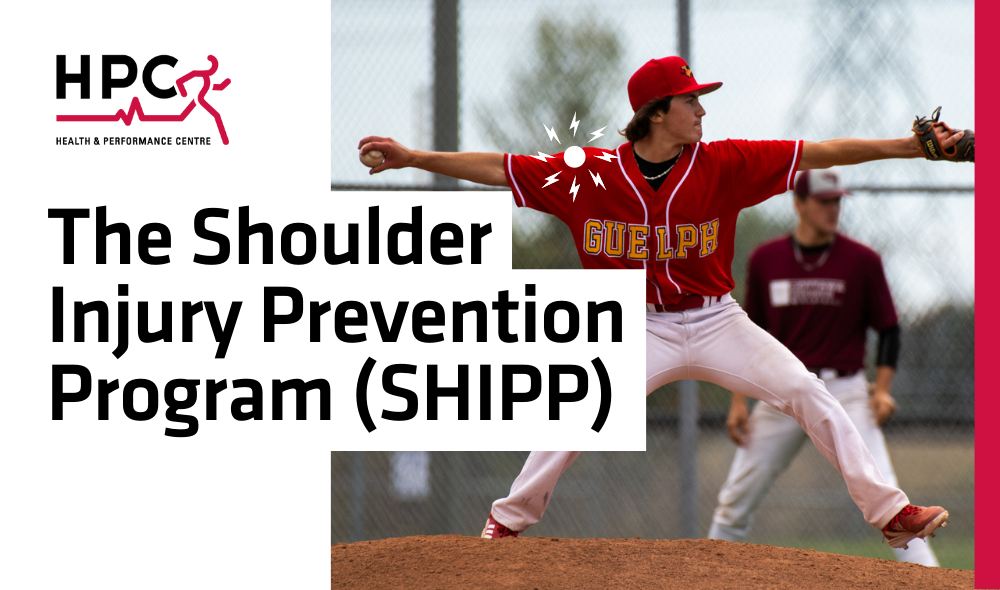The Shoulder Injury Prevention Program (SHIPP) | HPC Guelph
Preventing Shoulder Injuries in Throwing Athletes: The Shoulder Injury Prevention Program (SHIPP)
Throwing athletes, whether amateur or professional, are at high risk of shoulder injuries due to the excessive force generated from the muscles that move the shoulder. At the Health & Performance Centre (HPC) in Guelph, we understand the importance of preventing such injuries, and that’s why we offer the Shoulder Injury Prevention Program (SHIPP) for throwers from sports like baseball, softball, football, basketball, and volleyball.
The SHIPP program is specifically designed to help reduce the risk of shoulder injuries in throwing athletes. Our program focuses on assisting throwers in the five key areas necessary for reducing their risk of shoulder injuries:
- Significant range of motion
- Strength
- Coordination
- Neuromuscular control (feedback from nerves to muscles)
- Specific training
→ Shoulder Pain Causes, Diagnosis & Treatments
Importance of Range of Motion, Strength, Coordination, and Neuromuscular Control
Throwers require a significant range of motion, strength, coordination, and neuromuscular control to generate force and move their arm at high velocities. At HPC, we understand that good coordination, control of biomechanics, and strength throughout the whole body are important for generating force through the arm. Our program can help throwing athletes achieve improvements in range of motion, strength, coordination, and neuromuscular control, thereby reducing their risk of shoulder injuries.
For example, most throwers have excessive outward rotation and reduced inwards rotation of the shoulder with the elbow up at shoulder height. However, the total motion is usually equal between throwing and non-throwing shoulders. This simply means that through training, the throwing shoulder has transitioned its total available range of motion to bias the outward rotation “cocking position” of throwing.
Common Shoulder Injuries in Throwing Athletes
Shoulder injuries are the most common injury in both amateur and professional throwing athletes due to the high demands on the shoulder. Overloading structures of the shoulder without adequate time for recovery and repair can lead to overuse type injuries such as rotator cuff tears, tendonitis, labral tears, and impingement syndromes.
Overloading structures of the shoulder without adequate time for recovery and repair can lead to overuse-type injuries such as:
- rotator cuff tears
- tendonitis
- labral tears
- Impingement Syndrome
- Shoulder Separations & Dislocations
We can reduce the risk for these types of injuries by controlling variables that have been associated with increased risk such as:
- intensity
- duration
- frequency of play
- rest between games
Luckily, for those that put the time into a regular preventative conditioning program that incorporates the principle of specific training, improvements in strength, range of motion, coordination and neuromuscular control can be achieved.
